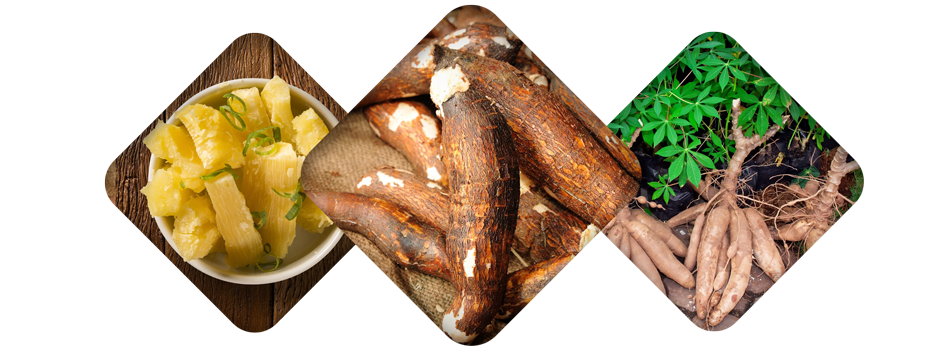 Cassava is one of the most important tropical root crops in West Africa. The total annual production in Africa was 169 million tonnes in 2018. This production was led by West Africa with a total production of 93 million tonnes, which represents 55% of the production of cassava in Africa and 33.5% of the world production.
Cassava is one of the most important tropical root crops in West Africa. The total annual production in Africa was 169 million tonnes in 2018. This production was led by West Africa with a total production of 93 million tonnes, which represents 55% of the production of cassava in Africa and 33.5% of the world production.
Every part of the crop can be utilized. The leaves are relatively rich in protein and can be consumed, the storage root is consumed as a source of food and starch products and biofuels.
Côte d’Ivoire
In Côte d’Ivoire, one of the priority sectors by the National Export Strategy is Cassava sector.
This sector was selected on the basis of its export potential, combined with competitiveness criteria and socio-economic impact including job creation for both women and youths. Production efforts to improve the cassava economy of Côte d’Ivoire hinges on increasing the cultivated area under cassava crop using best-bet practices.
In Africa which produces about half of world cassava, Cote d’Ivoire is one of the top five countries with huge cultivation number.
The effort of the programme after completion, will improve the Cassava value chain in Côte d’Ivoire and set it as a priority product for export.
Ghana
Cassava is the most important root crop in Ghana. According to the Ghana Export Promotion Authority, the estimated total land cultivated with cassava production is 900,000 hectares. In Ghana, over 70% of farmers engage in cassava production, and the sector contributes to about 22% of Agricultural GDP. Ghana ranks among the top five cassava producers in Africa with an annual average production of sixteen million metric tons. At least eighteen different improved varieties of cassava are produced in commercial quantities for diverse uses.
The Action to make Cassava Value Chain a priority area in Ghana is in line with the government’s wide-ranging policy measures to stimulate economic growth, prop up the private sector and generate new job opportunities, especially for the youth and women. The intervention is fully in line with the National Environmental Protection Agency’s developmental dimension and the regional industrialisation priority setting which gives focus to the agricultural sector with an emphasis on the value-added transformation of local raw materials and its contribution to GDP.
Sierra Leone
Cassava for food dominates the current usage in Sierra Leone. A little percentage is, however, used for animal feeds and other cottage industries.
After the devastating effects of Ebola crisis on the social and economic situation of the country, the action to include cassava as one of the priority areas to support was made.
It is also set as a strategy to stimulate economic growth, support the private sector involvement and generate new job opportunities, especially for the youths and women.
The intervention is fully in line with the Environmental Protection Agency’s developmental dimension. It helps to contribute to the national industrial transformation agenda through a value chain approach as well as deepening access to regional and global markets.
Cassava is the first staple-protein (consumption of roots and leaves) food consumed in the country. It is grown everywhere throughout the country.
Cassava is also important due to it being an income-generating crop that can guarantee food for poor rural households on a small-scale level.
Liberia provides a strong basis for investors in cassava value addition such as gari, cassava flour, high-quality cassava starches and adhesives.
Liberia Agricultural Transformation Agenda (LATA) has identified Cassava as one of the most vital agro-products which needs to be focused on.
In addition to contributing to food security, the promotion of Liberia’s cassava sector can lead to a significant boost in the agro-food industry, non-food industry, poultry & livestock industries.
It can also contribute significantly to the empowerment of women and youth, who make up the majority of smallholder producers and carry out over 80 per cent of trading activities in the rural areas.









